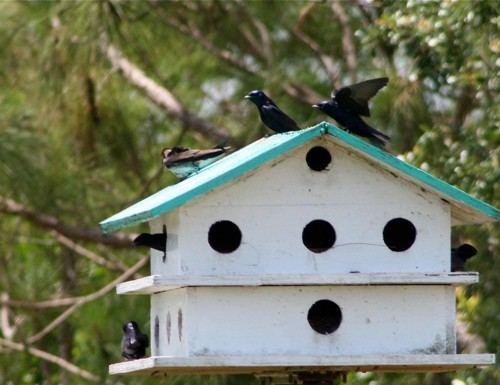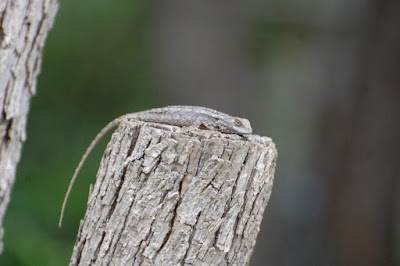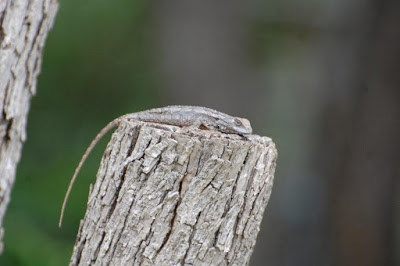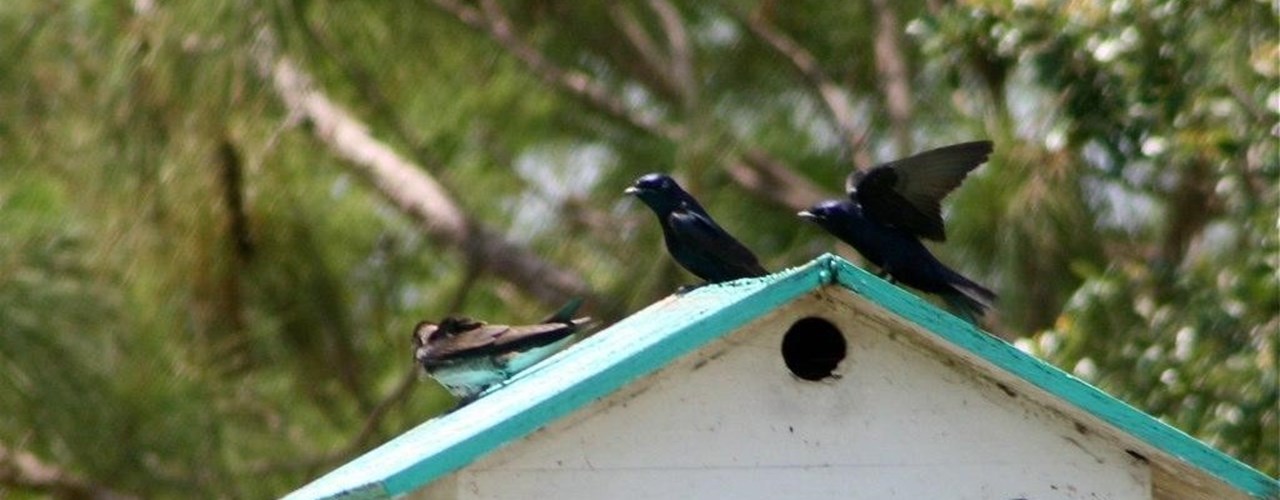Providing Backyard Shelter for Wildlife
Shelter is an important component of wildlife habitat. The right kinds of shelter can protect animals from predators, shield wildlife from harsh weather conditions, and provide a place to rest. If you are attempting to attract wildlife to your backyard, providing shelter is one of the best ways to ensure that animals feel safe enough to make your yard their home.
A variety of shelters can be used in your yard, depending on the species you hope to attract and the time and cost you are willing to invest in the shelter. Ready-to-use shelters are quick and easy to install, but may cost more than homemade shelters and may not fit the specifications of the target species. Homemade shelters are a more time-consuming option, but can be built to attract specific wildlife and can be custom designed to fit your yard. For a more natural approach, you can strategically plant native species of vegetation that wildlife use for shelter in the wild. Often, the simplest shelters are nothing more than well-placed branches or rocks arranged in such a way that makes the yard more attractive to wildlife.
If you are interested in attracting birds, the type of birdhouse you provide will determine what species decides to inhabit it. Some species of birds, such as cardinals (Cardinalis cardinalis), orioles (Icterus spp.), and goldfinches (Spinus spp.) do not typically use birdhouses. Other species, like bluebirds (Sialia sialis), purple martins (Progne subis), and Carolina chickadees (Poecile carolinensis) are some of the most common occupants of birdhouses – but they will only use houses that fit their preferences. For example, purple martins are extremely social birds and will most often occupy a birdhouse if it is an apartment-style that can house a whole community. Bluebirds, on the other hand, prefer houses with only one room that are approximately 50-75 yards away from other birdhouses. Other factors to consider include the placement of your birdhouse (in an open area or hidden among trees), the size of the entrance, the size of the box, and the height at which you hang the house (The Cornell Lab of Ornithology).

Purple martins nest colonially and prefer these apartment-style birdhouses.
Photo by Maureen Leong-Kee.
Lizards are desirable creatures to have in your backyard because they will eat insects as well as some nuisance species like slugs. Their behavior can be both informative and entertaining to watch. Smaller animals usually need shelter to feel safe. Lizards will use a pile of rocks both for sunning themselves in the warmth of the day and as a quick escape from predators. Another option is to provide a pile of logs or branches that will not only attract lizards, but also prey like insects. Keep in mind that wood piles are attractive to species such as snakes and rodents, so it is best to locate wood piles away from your home. To attract lizards, also consider how shelters are arranged and connected. Lizards will feel more comfortable in your yard if they can easily maneuver from one location to the next. Abundant vegetation provides concealment for lizards as they move through the yard, and additions like vines can help them quickly crawl up walls and fences to escape predators.


You can find eastern fence lizards (Sceloporus undulatus) throughout
the state of Texas. Photo by Jim Cathey.
Providing the correct balance of protection and a comforting place to rest will make your backyard inviting to any type of wildlife species that you are aiming to attract. Backyard wildlife will enhance your living space by providing beauty, entertainment, and perhaps a little bit of pest control. If you implement these principles, your backyard will likely be full of new life in no time.
For more help in choosing native plants for your backyard, utilize Texas A&M AgriLife Extension’s resource page on gardening and landscaping: http://ekps.tamu.edu/
--
Edited by Maureen Frank, Extension Wildlife Specialist
Literature Cited
- “Create a Lizard Friendly Garden.” Backyard Buddies. Web. http://www.backyardbuddies.org.au/habitats/create-a-lizard-friendly-garden
- Harrison, George. “Attracting Nesting Birds With Better Birdhouses.” Birds & Blooms. 2014. Web. http://www.birdsandblooms.com/birding/birding-basics/attracting-nesting-birds-better-birdhouses/
- “How to Attract Wildlife to Your Property.” Windstar Wildlife Institute. 2010. Web. https://www.windstar.org/animals/how-to-attract-wildlife-to-your-property/
- “Right Bird, Right House.” Nest Watch. The Cornell Lab of Ornithology. Web. https://nestwatch.org/learn/all-about-birdhouses/right-bird-right-house/




